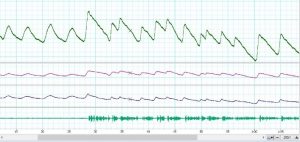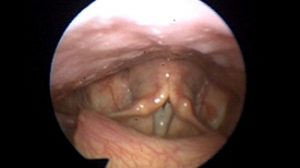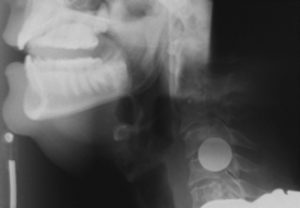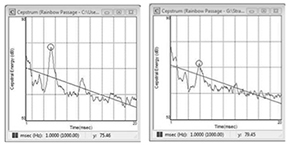Current and Recent Projects
 We are currently studying respiratory-based methods for the treatment of muscle tension dysphonia. Muscle tension dysphonia is a voice disorder that can be associated with over-activity in various voice-related muscles and altered respiratory and laryngeal behavior.
We are currently studying respiratory-based methods for the treatment of muscle tension dysphonia. Muscle tension dysphonia is a voice disorder that can be associated with over-activity in various voice-related muscles and altered respiratory and laryngeal behavior.
 We recently published the results of a double-blind, randomized control clinical trial addressing the effects of octanoic acid on voice in people who have essential voice tremor. Essential voice tremor is a neurological disorder that produces rhythmic, involuntary movements of the voice-related muscles and structures. We found that after octanoic acid, magnitude of acoustic tremor was reduced relative to the placebo condition.
We recently published the results of a double-blind, randomized control clinical trial addressing the effects of octanoic acid on voice in people who have essential voice tremor. Essential voice tremor is a neurological disorder that produces rhythmic, involuntary movements of the voice-related muscles and structures. We found that after octanoic acid, magnitude of acoustic tremor was reduced relative to the placebo condition.
 We study methods which may improve our reliability of visual-perceptual and auditory-perceptual ratings of voice disorders.
We study methods which may improve our reliability of visual-perceptual and auditory-perceptual ratings of voice disorders.
 We use radiographic imaging and ultrasound imaging to study the position of the hyoid and larynx during speech in people with and without voice disorders. Muscle tension dysphonia is a voice disorder that can be associated with over-activity in various voice-related muscles and an elevated laryngeal position. We found that people with muscle tension dysphonia showed higher laryngeal position during “ee” phonation on quantified measures taken from lateral x-rays, when compared to people without voice problems.
We use radiographic imaging and ultrasound imaging to study the position of the hyoid and larynx during speech in people with and without voice disorders. Muscle tension dysphonia is a voice disorder that can be associated with over-activity in various voice-related muscles and an elevated laryngeal position. We found that people with muscle tension dysphonia showed higher laryngeal position during “ee” phonation on quantified measures taken from lateral x-rays, when compared to people without voice problems.
- We use acoustic, aerodynamic, and ultrasound measures to study the effects of treatment-related maneuvers and the distinguishing physiological features of people with and without voice disorders.
 We study the utility of specific acoustic measures of voice. These projects address the relationships of acoustic measures to auditory-perceptual measures, the applicability of measures to continuous speaking contexts which are more representative of typical speaking, and the relationships between acoustic measures.
We study the utility of specific acoustic measures of voice. These projects address the relationships of acoustic measures to auditory-perceptual measures, the applicability of measures to continuous speaking contexts which are more representative of typical speaking, and the relationships between acoustic measures.
